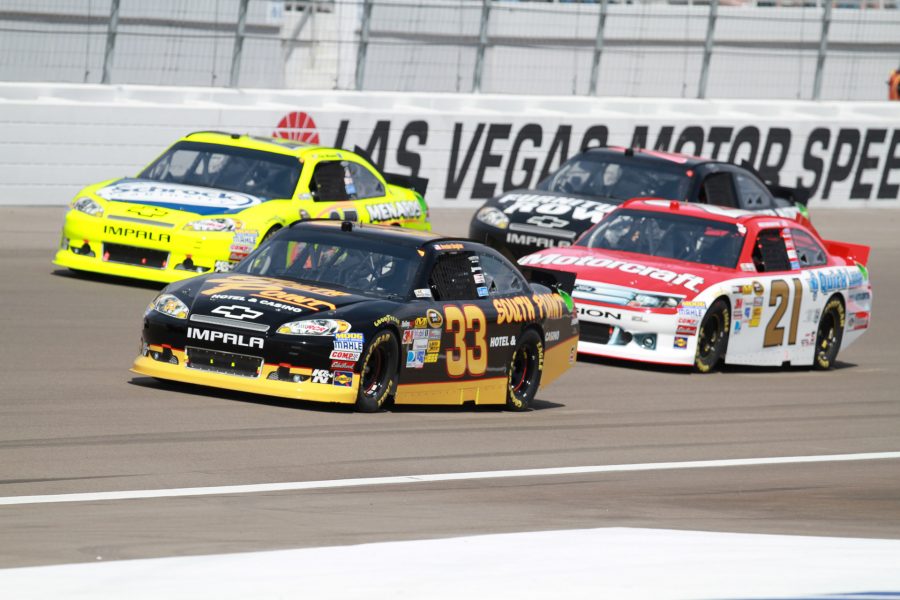NASCAR Speeds to New Safety Improvements
March Issue
March 5, 2017
The National Association for Stock Car Auto Racing, better known as NASCAR, will be celebrating its 69th anniversary in February of 2017. NASCAR has been a part of American culture and has allowed fans to bet on drivers and watch the fast cars, but NASCAR has not always been the way it is today. Because of technological and safety improvements, NASCAR has become not only more interesting to watch, but also less hazardous for the drivers.
Since NASCAR was founded, there have been 28 driver fatalities. The most recent fatality was Dale Earnhardt in 2001. Earnhardt was killed in the final lap of the Daytona 500 race in Daytona Beach, Florida when he was hit by another racer that was driving at a speed of 160 miles per hour. Dale was one of the more beloved figures in the world of NASCAR. After Earnhardt’s death, NASCAR made it a top priority to improve crash safety.
“I think Dale Earnhardt was a very inspiring figure to the sport of NASCAR because he changed the way people drive today. Even though I never got to see him drive live, I can see how he changed the sport forever,” Joey Mullen ’19 commented.
Even before the tragic death of Dale Earnhardt, NASCAR has made many improvements since 1949. Helmets were made mandatory to wear the first couple of years after the company was introduced. This reduced the risk for concussion, crash damage, and full face helmets helped with facial trauma.
In 1963, seatbelts were made mandatory by all automotive manufacturers. This was a huge improvement from what most drivers were using, which was usually just rope. Roll cages were also made mandatory to all vehicles participating in a NASCAR race. Roll cages are put in cars in case of a rolling crash, which would usually tear up the car and dent it. Roll cages are specifically made to keep the car intact and the racer safe during impact.
NASCAR also made many small safety modifications and made these mandatory for all racers and vehicles. Some of the modifications included introducing fuel cells rather than the ordinary fuel tank, fire retardant uniforms, and on-board fire extinguishers. Window netting took place of window bars, and improvements in seats and tires made for a softer ride.
Not only has NASCAR made it a top priority to provide the utmost safety for their drivers, the companies have also made it a top priority to give the drivers a high performance vehicle. Over the past 70 years, racing companies that make their own vehicles have been working on making a sleeker, more powerful, and more aerodynamic vehicle. Some other racing companies that rely on car manufacturers like Dodge, Ford, and Chevrolet are confident in these cars.
Although the safety rating has gone up in NASCAR, it is still a controversial pastime according to some people.
Betsy Cepparulo, Upper School Peace teacher, voiced her opinion on NASCAR and it’s recent changes: “I think the increased safety is good and necessary, but I think it’s a silly sport. It’s terrible for the environment, it is still quite dangerous, and I think it’s more of a hobby than a sport, based on its physical requirements.”
But NASCAR continues to thrive in American culture. “NASCAR’s pretty cool. It’s interesting to watch sometimes,” says Dani Nathan ’19.
Because racing can be a very dangerous sport, it is very important to keep improving in safety and cars. This can help with keeping the sport interesting, while also keeping the drivers safe. It is interesting to see what improvements NASCAR will make in 31 years as they celebrate their 100th anniversary.































